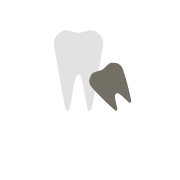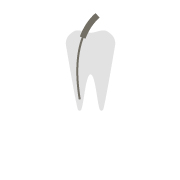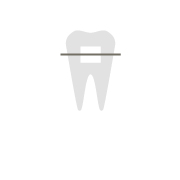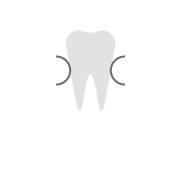Periodontal
About periodontal disease treatment

What is periodontal disease?
It is an inflammatory disease caused by infection with periodontal bacteria.
Periodontal disease is caused by bacteria in plaque that is not brushed properly, which leads to inflammation of the gums. If left untreated, it can even dissolve the bone that supports the teeth (alveolar bone), causing tooth loss.
It is said that 80% of Japanese adults suffer from periodontal disease.
The main causes of
periodontal disease
The main cause of periodontal disease is the bacteria present in plaque and tartar.
Many periodontal disease bacteria prefer places with little oxygen, so they lurk in the periodontal pockets, which are the gaps between the teeth and gums. Toxins released by periodontal bacteria destroy surrounding tissues and cause inflammation. In addition, lifestyle habits such as smoking, lack of sleep, stress, and poor diet can weaken the immune system and cause poor blood circulation, which can accelerate the progression of periodontal disease.
Progression of
periodontal disease


Gingivitis
The first symptom of periodontal disease is swelling of the gums where plaque or tartar has built up, and bleeding when brushing your teeth. This condition is called gingivitis.
Periodontitis (mild)
Furthermore, if plaque and tartar are left on the teeth, the bone around the teeth will dissolve and the periodontal pockets will deepen.
Periodontitis (moderate)
The bone supporting the teeth (alveolar bone) dissolves further, causing pus to come out of the gums and the teeth to become loose.
Periodontitis (severe)
It can also cause teeth to become loose and, in the worst case scenario, can even cause the teeth to fall out.
Periodontal disease progresses in this way without any noticeable symptoms. The bone (alveolar bone) that supports the lost teeth basically does not grow back.
Periodontal disease treatment examples
Moderate periodontal
disease cases
Before
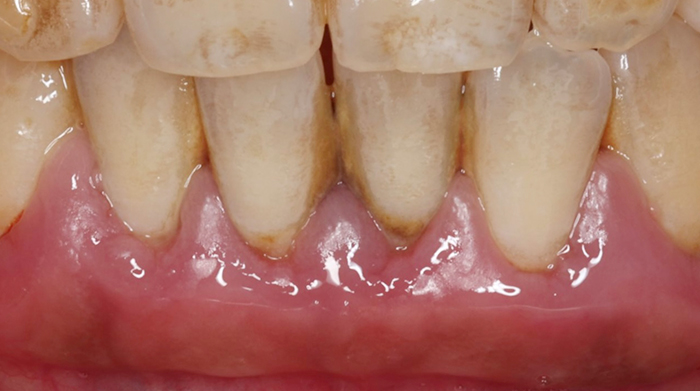
After
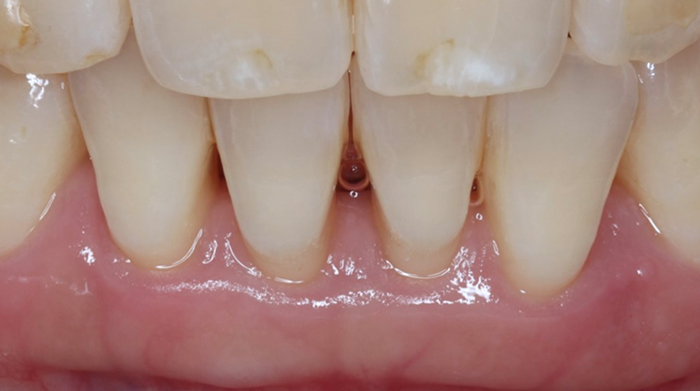
Flow of periodontal disease treatment
-
Step 1
- Examination/Diagnosis
- We take X-rays to check the condition of the bone (alveolar bone) that supports the teeth, and also take intraoral photographs to record the condition of the gums, which cannot be seen on X-rays. We use an instrument called a probe to check the depth of the gap between the teeth and gums (periodontal pockets) and whether or not there is bleeding. Based on the results of the examination, we will understand the condition of your mouth and explain what kind of treatment we will provide in the future.

-
Step 2
- Basic periodontal
treatment - We will remove plaque and tartar, which are the causes of periodontal disease, smooth the surfaces of the tooth roots, hold loose teeth in place, adjust the bite, and provide brushing instructions. If there are no problems with periodontal disease, we will move on to regular checkups every three months. If the periodontal disease has progressed and tartar has built up under the gums, we will remove the tartar under the gums (subgingival tartar) little by little over a period of up to six sessions.
The tartar hidden under the gums is hard and in an invisible place, so we will only touch a few teeth at a time.

- Basic periodontal
-
Step 3
- Reassessment
- A re-examination (re-evaluation) will be performed two weeks to one month after the removal of subgingival tartar. If inflammation remains, brushing instructions or tartar removal will be performed again. For those with severe periodontal disease with deep periodontal pockets that are difficult to improve with basic periodontal treatment alone, periodontal surgery may be performed.

-
Step 4
- Periodontal surgery
- For tartar deep in the gums that cannot be removed by basic periodontal treatment, a surgical procedure called periodontal surgery may be required. After the dentist administers local anesthesia, the gums are incised to directly expose the deep tartar, and then the hygienist and dentist remove the tartar and suture the gums. Periodontal regenerative therapy, a treatment to create new bone that has been lost, may also be performed at the same time. Please feel free to contact your dentist or hygienist for more information.







